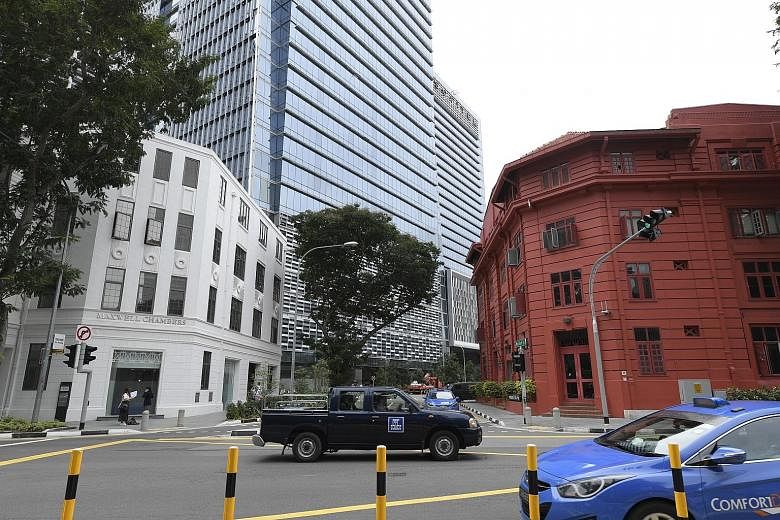Singapore's push to become a global dispute resolution hub was given a further boost yesterday with the announcement that Maxwell Chambers will triple in size.
Billed as the world's first integrated dispute resolution complex when it opened in 2010, the facility will be expanded to take over another iconic building next door, the Red Dot Traffic Building, in May.
It will undergo restoration work and when completed by 2019, it will be linked to the adjoining building by a link-bridge, adding 120,000 sq ft of floor space for 50 new offices for international dispute resolution institutions, arbitration chambers and top arbitral outfits. This will "really put Singapore on the map in terms of facilities for arbitration", Senior Minister of State for Law Indranee Rajah told reporters.
The expansion is aimed at supporting the rapid growth of dispute resolution institutions here and accommodating a waiting list of potential tenants.
The Singapore International Arbitration Centre (SIAC), which is housed at Maxwell Chambers and has offices in Mumbai, Seoul and Shanghai, has seen new case filings rise by more than 300 per cent in the last decade. In 2015, SIAC recorded 271 new cases and handled a total dispute sum of $6.23 billion, the highest since it was set up in 1991.
Last year, Maxwell Chambers was the venue for 212 arbitration cases, up from 179 in 2015. In a statement, the Law Ministry said it "has quickly become one of the most preferred hearing facilities in the world".
Taking over the state-owned Red Dot Traffic Building - a conserved heritage structure that was the Traffic Police headquarters for over 70 years until 1999 - is the latest in a series of moves to boost Singapore's position as a dispute resolution hub.
The Singapore International Commercial Court, which has positioned itself as a neutral venue for dispute resolution, heard its first case in November 2015, a $1.1 billion cross-border dispute. Last year, Singapore also ratified the Hague Convention on Choice of Court Agreements, which gives the decisions of courts here greater enforceability worldwide.
Ms Indranee said yesterday: "One of Singapore's key strengths as an international dispute resolution centre is our legal system, which is neutral, stable, has high-quality jurisprudence and is trusted by businesses.
"We will build on this and strengthen our ecosystem of laws, lawyers, institutions and infrastructure so that we can better serve the needs of businesses and take our international dispute resolution services to the next level."
Ms Koh Swee Yen, a partner in the commercial and corporate disputes and international arbitration practices at WongPartnership, said that as the number of arbitration cases continues to grow, Singapore, which has a "solid reputation as a seat for international commercial arbitration, and in recent years, also for investor- state arbitration", would only benefit further from this development.
The Red Dot Traffic Building has about 33 tenants, some of whom were told to vacate as early as 2015. Anchor tenant, private museum Red Dot Design Museum Singapore, told The Straits Times that it is still in talks over its plans.

